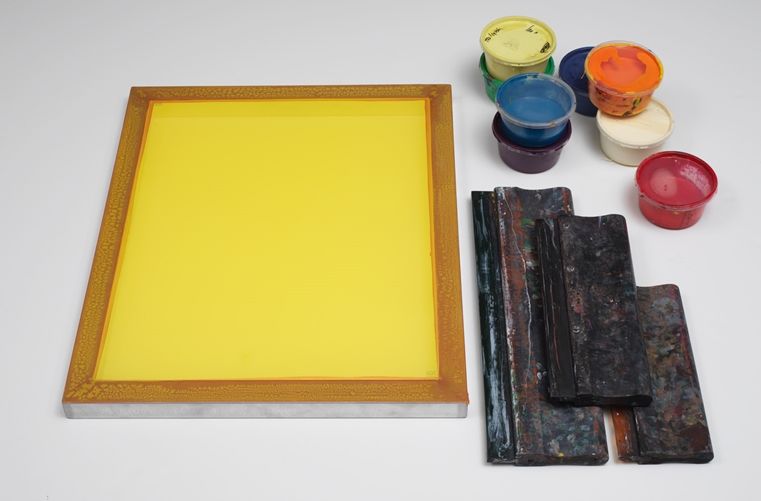The Important Guide to Understanding Screen Printing and Its Versatile Utilizes
Screen printing has an abundant history that dates back to old times, progressing right into an advanced method made use of throughout different sectors today. This guide explores the ins and outs of the screen printing procedure, describing its applications in marketing, style, and home style - 10:9 Design Embroidery. Recognizing these principles can open up innovative potential for both commercial and artistic projects. The following sections will certainly reveal crucial tips and techniques to improve one's screen printing endeavors
The Background of Screen Printing
Although screen printing has origins that trace back centuries, its evolution mirrors the technological and artistic advancements of various societies. Originating in old China, the technique was originally utilized for embellishing fabrics and later spread to Japan, where it came to be essential to Ukiyo-e woodblock printing. The approach moved to Europe in the 18th century, where it gained appeal among craftsmens and business printers. The creation of image emulsion in the 20th century reinvented screen printing, enabling for more complex layouts and higher performance. Artists like Andy Warhol better propelled its appeal, utilizing the tool to create legendary jobs that blended commercialism and art. By the late 20th century, screen printing had actually developed itself as a flexible strategy, employed in vogue, advertising and marketing, and art. Today, it remains to develop, incorporating digital technology and broadening its applications throughout various sectors.
The Screen Printing Process Explained
Screen printing changes imaginative visions into tangible styles via a series of accurate steps. Originally, a photo is produced and afterwards moved onto a screen, normally constructed from great mesh fabric extended over a frame. A light-sensitive emulsion is related to the screen, which is subjected to light, solidifying in areas not covered by the image. After rinsing the unhardened solution, a pattern is created.
Next off, the screen is put over the substratum, whether it be textile, paper, or another material. Ink is then pushed with the open areas of the pattern using a squeegee, depositing the design onto the substrate below. This process can be repeated for several shades, needing different screens for each tone. Ultimately, the published product is cured using warmth to guarantee the ink sticks properly, causing a sturdy, lively style on-line.
Sorts Of Screen Printing Techniques

In addition, specialty techniques, such as discharge screen printing, remove dye from the material to create softer prints, while aluminum foil screen printing uses metal aluminum foil to attain a glossy coating (10:9 Design Screen Printing). Each strategy uses unique qualities, accommodating different innovative requirements and production ranges, inevitably broadening the possibilities within the screen printing domain
Applications of Screen Printing in Various Industries

Additionally, the signage and marketing industries utilize screen printing for creating appealing displays and banners. This approach enables strong colors and detailed styles that capture focus. In electronic devices, screen printing is employed for using conductive inks to circuit boards, important for part connections. The home decoration industry welcomes screen printing to produce distinct designs on fabrics and wall surface art. Overall, screen printing works as a vital tool across varied fields, boosting products with individualized and visually enticing graphics.
Tips for Successful Screen Printing Projects
While embarking on a screen printing project, cautious attention to detail can substantially enhance the final end result. First, picking top quality products is important; this consists of the screen, inks, and substratums. Making use of appropriate mesh counts can influence ink deposition and information resolution. Preparation is similarly important; complete cleaning of screens and appropriate direct exposure times guarantee crisp prints.
Next, exact enrollment is crucial for multi-color prints. Utilizing positioning tools can assist accomplish specific layering. In addition, screening prints on scrap products before production helps determine prospective concerns without wasting resources.

Frequently Asked Concerns
What Products Are Ideal for Screen Printing on Material?
Cotton and polyester blends are ideal for screen printing on material because of their sturdiness and ink absorption. In addition, specialty materials like silk or canvas can generate distinct structures and coatings, enhancing the general layout quality.
Just how Do I Tidy and Maintain Screen Printing Equipment?
To clean up and keep screen printing equipment, one must routinely wash displays with appropriate solvents, examine mops for wear, oil moving parts, and store all products in a completely dry, dust-free environment to prolong their life-span.
What Are the Environmental Impacts of Screen Printing?
Screen printing can have considerable ecological effects, consisting of chemical waste from solvents and inks, water usage during cleaning processes, and energy usage. Environment-friendly products and lasting techniques are essential for reducing these adverse results.
Can Screen Printing Be Done in the house Effectively?
Screen printing can be efficiently done at home with the best materials and techniques. Hobbyists can develop top quality prints, though success relies on their ability degree, tools, and understanding of the procedure included.
What Are the Expenses Associated With Starting a Display Printing Organization?

Starting a screen printing business entails expenses for equipment, products, and office. Preliminary expenses commonly vary from a few hundred to numerous thousand dollars, relying on the scale, top quality of machinery, and wanted production ability.
Screen printing has an abundant history that dates back to old times, advancing into an innovative method used throughout various markets today. Another strategy, rotary screen printing, utilizes cylindrical displays, helping with continual printing on material rolls, thereby boosting effectiveness for large productions. Additionally, specialized strategies, such as discharge screen printing, eliminate dye from the material to develop softer prints, while foil screen printing applies metal foil to achieve a glossy coating. In the fashion market, screen printing is widely utilized to develop vibrant styles on apparel, making it possible for brands to showcase their special designs. Cotton and polyester blends are optimal for screen printing on textile due to their sturdiness and ink absorption.